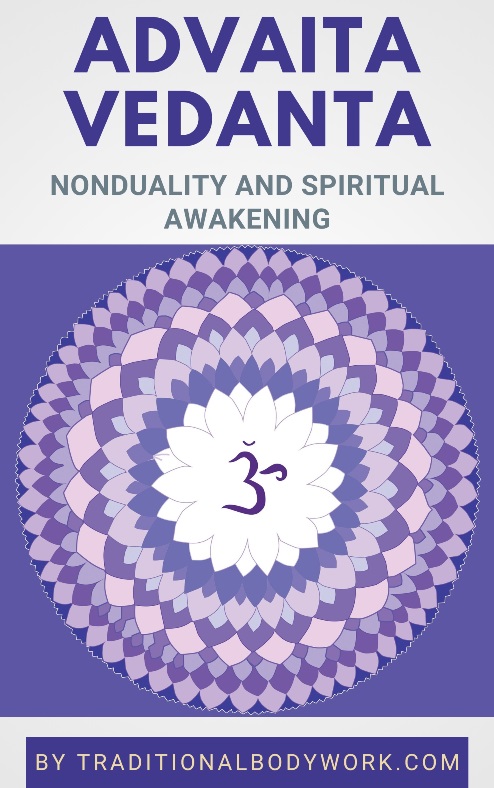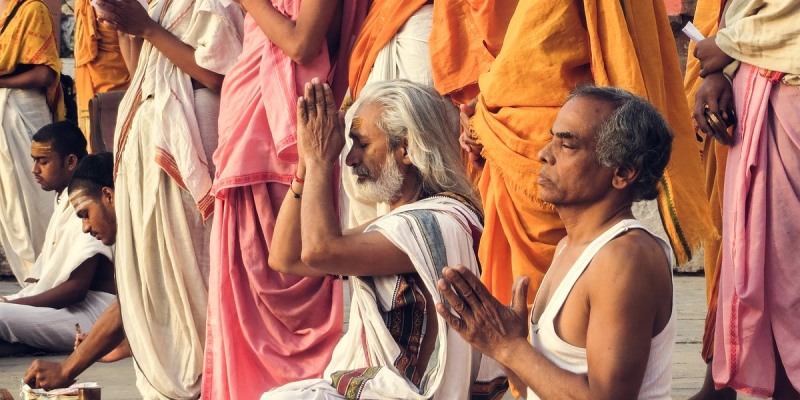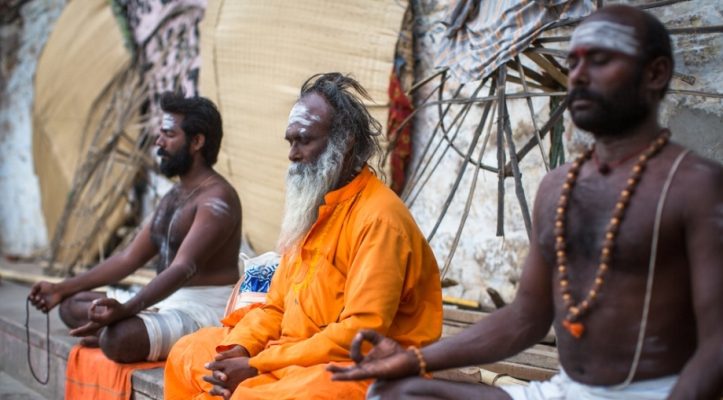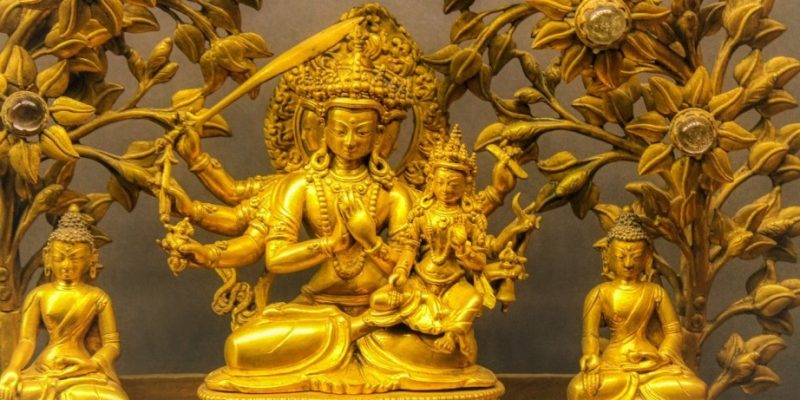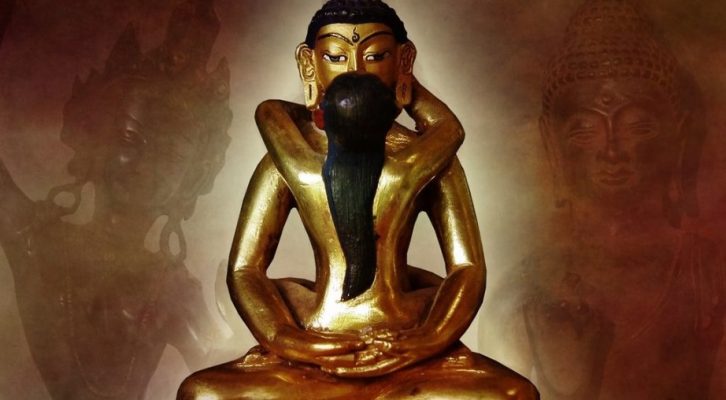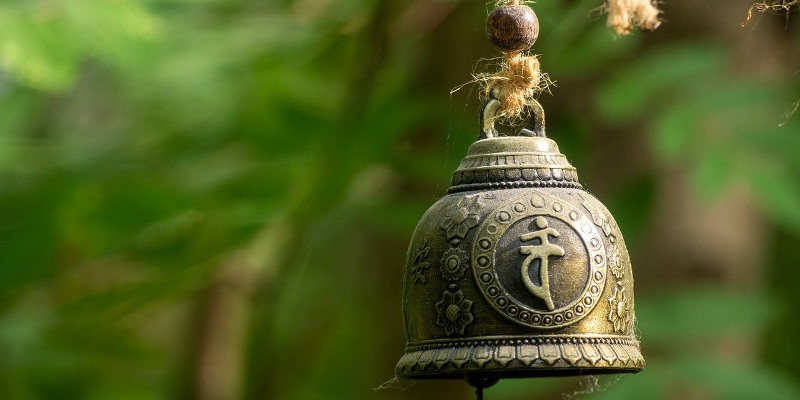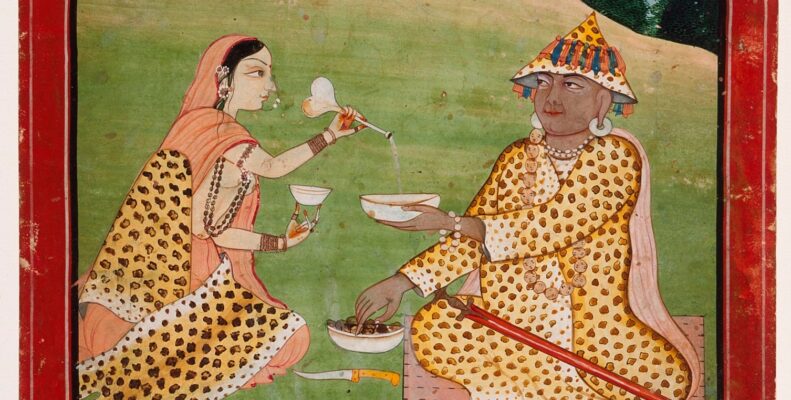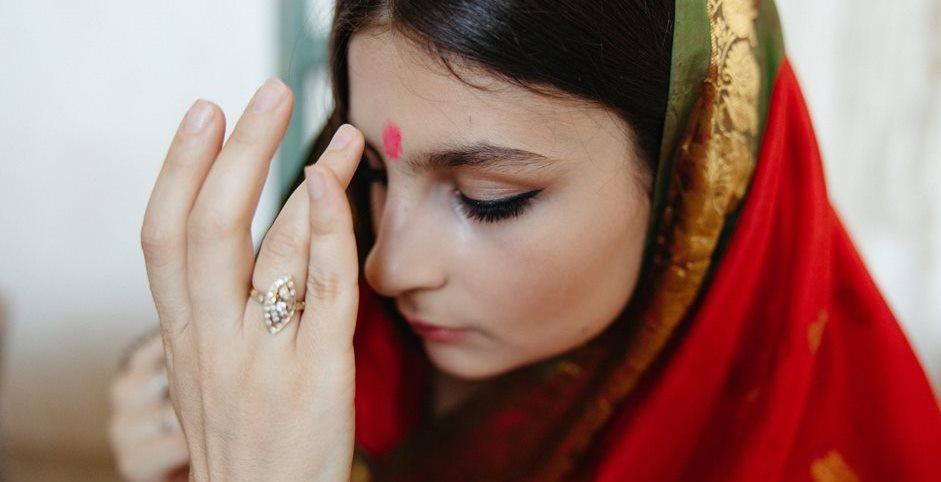
The word Bindu has its origin in the ancient Sanskrit language. It can mean a variety of things, such as point, midpoint, center, drop, drop of energy, drop of fluid, spot, dot, cipher, small particle, mark, zero, globule, sign, among a range of other denotations.
It’s a rather complex concept that — depending on the context in which it’s used — often has different meanings in Hinduism, Buddhism, Ayurveda, Yoga, and Tantra.
There are also other domains in which the word Bindu is used, such as in the Hindu performance arts, in Hindu architecture, and in Sanskrit grammar rules, among other areas, but we’ll leave those out of the discussion below, because our aim is to predominantly explore the word and its use in its religious, spiritual, and psychophysical sense, notably related to Ayurvedic, Tantric, and Yogic practices.
Bindu in Hinduism
In Hinduism, Bindu may refer to the origination point of the Universe, the center point of unmanifested creation, divine and pure potential, and the highest form of consciousness. In this context, we can often find the concept of Bindu used in conjunction with Nada (sound), which becomes manifest during the creation of the Universe.
The drawings of Mandalas and Yantras in Hinduism also revolve around an origination or center point, which is called the Bindu. This Bindu represents the silent, unknown starting point of Divine Existence.
The feminine form of Bindu is Bindi, which is the well-known small decorative, devotional, and mystical colored dot — which by Hindus, Jains, Buddhists, and Sikhs alike — may be applied to the center of the forehead at the place of the Third Eye. It represents the opening of the Third Eye, and the subsequent activation of wisdom, strength, and concentration.
Bindu in Tantra and Yoga

In Tantra, Bindu can be a specific point or drop located between the eyebrows (the midpoint, also called Binducakra or Bindu Chakra, clearly reminiscent of the Ajna Third Eye Chakra) as a location which is the object of meditation. Moreover, in some Tantric texts Bindu is a synonym for Kundalini Energy.
Bindu in Tantra and Yoga can refer to the mystical albeit physical location of Divine Union of spiritual energies in the body, there where Shakti and Shiva forces unite. Although it’s generally believed that this location is rather at the Brahmarandhra ending point of Sushumna Nadi (the Sahasrara Chakra), the Bindu spot at the Third Eye — the Mukta Triveni Point and location where Ida, Pingala, and Sushumna Nadis meet — is sometimes considered the actual point of Sacred Union.
The Bindu point may also represent the location at the back of the head where Brahmins grow a string of hair. In this case, it’s rather called the Bindu Visarga (“the falling of the drop”). It’s thought to be located between the Crown Chakra and Third Eye Chakra. This Bindu Visarga is believed to drop two fluids, being Amrita Nectar and a poison that — with Tantric exercises i.e. practices — can be purified into absolute consciousness.

Bindu can also refer to duality, notably contrasting feminine and masculine forces, such as apparent in the Yoga Chudamani Upanishad text (dated between the 14th and 15th century CE), one of twenty Yoga Upanishads, which discusses Kundalini and Tantra Yoga, and a variety of Yogic concepts.
In Tibetan Tantra (Vajrayana Buddhist Tantra), Bindu can stand for aspects of the Subtle Body which is thought to be composed of rTsa (Prana Energy Channels), rLung (Winds), and Thig Le (the Bindu “drops”). Depending on the context in which it’s used, Bindu (Thig Le) may mean vital energetic point (a type of acupressure or convergence point), generative fluid (seminal fluids i.e. semen or ovum), spiritual essence or sphere, spinning particles of spiritual light (a kind of mini-Chakras), among other meanings.
In the most gross, tangible material sense Bindu may be seen as a synonym for semen, and in both Tantra Yoga and Hatha Yoga there are practices that occupy themselves with transforming gross Bindu (semen) to subtle Bindu, that is, to Divine Consciousness.
Bindu in Ayurveda

In the Indian Vedic era (roughly between 1500 BC and 500 BC), Bindu were defined as special secret or mystic points in the body that could influence a human being on the physical, energetic, psychological, sexual, mental, and/or spiritual level.
Pressing or otherwise manipulating these vital points — today in Ayurveda more commonly called Marma Points — could either injure or heal a person. The word Marma can have several translations, such as vulnerable or vital part, essence, point, joint, spot, core, hidden, or secret, among other definitions.
These Bindu i.e. Marma (Marman) are thought to be intimately connected with the Chakra and Nadi systems, being able to control the flow of Prana Vital Force in both the Chakras and Yoga Nadis.


